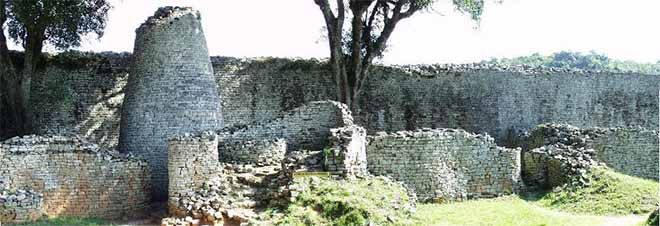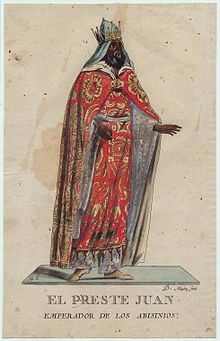The Ruins of Great Zimbabwe And King Solomon's Hidden Treasures
The Stone City

About eight thousand archaeological sites have been discovered so far between the Zambezi and Orange rivers. The Great Zimbabwe city, located in the middle of a large green area, about 500 km from the Zambezi, is without a doubt the most important and admirable site.
History of Zimbabwe
The first descriptions of the immense Kingdom of Zimbabwe, which had about fifteen thousand inhabitants, were transmitted to us by the Portuguese, who landed in Africa in the 16th century. The mystery hangs over the origin of this gigantic city of which only a few traces remain today. Many hypotheses have been formulated, but none seems to entirely satisfy archaeologists. Made of stone, the Great Zimbabwe city was built by natives long before the arrival of Europeans and Arabs. The complex overlooks a gigantic structure resembling an acropolis, while below one finds a rampart of 250 meters in circumference, reaching in some places 10 meters high.
The Conical Tower

This large defense structure was made with granite blocks transformed into bricks (a thickness never less than a meter), solidly joined to each other without any binder. Full of charm and mystery, the conical tower located in the middle of the Great Zimbabwe city is a structure without windows, doors or internal stairs. The most varied hypotheses have been put forward on the use for which it was intended. Some have thought that it had a symbolic role or that it was used for ritual ceremonies, of which we have no evidence, however. More prosaically, others have assumed that it was a grain depot, a kind of precursor to the silo. However, none of these hypotheses sheds sufficient light on the true vocation of this construction.
King Solomon's Treasures
For a long time, it was believed that King Solomon's treasures were hidden in the ruins of Great Zimbabwe, in a place unknown to all, which inspired many assumptions and myths. Around the middle of the 16th century, Joao de Barros, a Portuguese historian, wrote that the place where King Solomon's treasures had been hidden was called symbaoe by the natives. A link was immediately made with the Great Zimbabwe. However, research and expeditions did not find any trace of the lost treasures, and the only discovery was that of the historic and archaeological site formed by the urban complex of the ancient African city.
It is now believed that the legend of the immense hidden treasures is linked to the role of large trading center played by the Great Zimbabwe empire. This is where the caravans actually passed, and it was there that goods such as gold and slaves were sold and exchanged. Near the cities there were also mines from which precious minerals were extracted which contributed to increasing the wealth of the inhabitants of this region of Africa.
The reign of the priest John

Unable to prove with certainty the link between the ancient city of the Great Zimbabwe and historical figures, some researchers have attempted to establish relations between this mysterious place and figures whose existence has never been really proven. A recurring name in this context is that of the priest John, lord of mysterious kingdoms, located at the limits of the known world. The historical information that we have on him is very rare and above all very contradictory. We do know, however, that the theologian John the Grammarian, who was the representative of the iconoclastic movement of Byzantium, was nicknamed “priest John”: at the end of the iconoclasm, he became a rather hated character, associated with the universe of magic and heresy.
But let's go back to the legend. In the popular imagination of the Middle Ages, the priest John is a mysterious being, endowed with supernatural powers, sovereign of an extraordinary kingdom. Legend has it that in 1165 letters arrived to the Byzantine emperor Manuel I, to Pope Alexander III and to Frederick Barbarossa, from a certain Johannes Presbyter, king-priest of a wealthy and prosperous kingdom, where people lived with black skin. The letter revealed many details of the fabulous kingdom of the priest John, populated by creatures of different species (unicorns, fauns, satyrs and women of the same species, pygmies, cynocephals, giants, cyclops and phoenix-bird), and men who fed on the flesh of their dead. Despite the mythical themes and these impressive descriptions, the letter was taken seriously and, in 1177, the Pope, in agreement with Frederick Barbarossa, sent an answer to the priest John, but nothing was known of the expedition sent by the embassy: it may have disappeared in the desert of Iraq.
No one is sure either of the testimony delivered in the Supplementum Chronicarum of the Italian Filippo Foresti (1493), according to which ambassadors of the priest John passed by Genoa in 1306, during a mission going to the reign of Aragon . The kingdom of Priest John was sometimes located in Africa and sometimes in Asia. At the beginning of the 14th century missionaries and travelers mentioned the existence of an extremely rich and powerful African sovereign, whom they called the priest John: it is perhaps the very creation of this myth and its diffusion which contributed, gradually, to its geographical displacement. Priest John left history as mysteriously as he entered it, leaving only faint traces and a letter that no one today believes to be authentic. In Zimbabwe, you can only admire the remains of a large, well-organized city that some believe is the seat of his kingdom. A nameless kingdom, built with mastery and rich with enigmas that remained unanswered.
Priest John and Marco Polo
In the Book of Wonders, Marco Polo says that Genghis Khan asked priest John for his daughter's hand, but that he refused it. This refusal was the spark that started a war. Before meeting the enemy, Genghis Khan “brought before him astrologers who were Christians and brash and ordered them to be able to say who was going to win the battle (…) The Christians immediately had before them a large green reed, the cutting edge half in length and then put a part of it on the side of Cinghis and the other on the side of priest John, not very far from each other on the ground (…) On a part of the reed they wrote the name of Cinghis Can and on the other the name of the priest John, and said to Cinghis Can: “(...) these two reeds will come one on the other; and the one whose reed will surely come on the other will win the battle. Cinghis Can says he would like to see it and tells Christian astrologers to show it to him as soon as possible. The Christian astrologers took their psalter, read some psalms, then made their enchantments, and then the parts of the reed were agitated, it seemed that one was hoisted on the other, and finally, without anyone touching it, the one where was the name of Cinghis Can went up on that of priest John (…) And when Cinghis Can and his people saw that, they had great joy (…) since they saw themselves sure of the future victory. And as they find the Christians in the truth, always afterwards he did them great honor ”. The prognosis turned out to be correct and the two men clashed in a big battle. Marco Polo says on this subject that "Cinghis Can won the battle and Uncan, the priest John, was lost in this battle and from that day forward lost his land".









































































































































































































































































































































